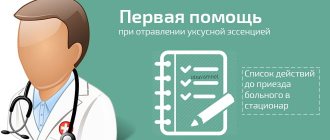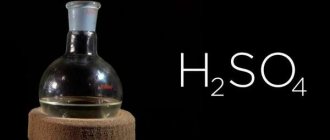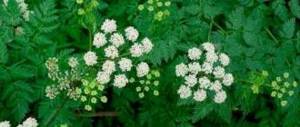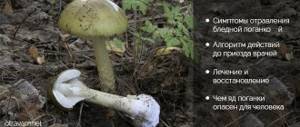A burn from alkali is a fairly dangerous injury. Contact of chemicals with the epidermis or mucous membrane leads to damage to the skin structures, after which injury to the deeper layers is observed. This type of burn resembles an acid burn in its symptoms. The strength of the effect and the depth of penetration of the damage depend on the concentration of the substance.
The scab that develops after damage by alkali has a soft and loose structure. It affects neighboring areas of the skin, but there are no defined boundaries. The color is white. The formation and resorption of the scab is very slow, as is the healing process of the lesion. Sometimes such an injury may leave scars and other blemishes.
Chemical skin burn: features, symptoms, diagnosis
A chemical burn is a violation of the integrity of the tissues of the human body under the influence of chemical agents.
This type of burn often becomes more dangerous than a thermal burn. This is due to the type of aggressive chemical substance and the duration of action of the reagent. The process of cell destruction and chemical absorption may continue even after the chemical component is eliminated, which often makes it difficult to determine the extent of the damage in a timely manner.
Chemical burns occur as a result of non-compliance with safety regulations when working with chemicals or in accidents at home (intentionally or through negligence).
The external symptoms of chemical burns differ depending on the effect of the chemical substance. Most often, acidic or alkaline drugs become the source of damage.
- When the skin is exposed to alkali, the resulting scab is looser, with blurred boundaries. Alkaline liquids are able to penetrate deeper into the skin than acids, causing more extensive damage to soft tissues.
- When the skin is exposed to acid, a dense, dry crust (scab) with clear contours forms at the site of the lesion.
Burns caused by exposure to chemical acids are mostly superficial. The name of the affected acid can be determined by the color of the affected skin.
- Upon contact with sulfuric acid , the skin first turns white, then turns grey. With prolonged contact, the burn becomes darker, browner.
- Exposure of the skin to nitric acid causes the skin to change to a yellow-green or brown-yellow color (depending on the duration of contact).
- After exposure to hydrochloric acid, the skin turns noticeably yellow.
- A burn caused by acetic acid becomes dark brown in color.
- Carboxylic acid causes whitening of the damaged skin area, which over time changes to a brown color.
The degree of damage can be diagnosed as accurately as possible only after a few days (when the scab area begins to suppurate). The longer the effect of chemical components on body tissue and the larger the affected area, the more dangerous the burn is for human health and life. Therefore, in case of chemical burns, it is very important to provide first aid to the victim, and then immediately seek qualified medical assistance.
It is in the hospital that, based on the nature of the existing injuries, the depth of penetration, the concentration of the chemical reagent and the duration of its exposure, the degree of the resulting chemical burn will be determined and treatment will be prescribed.
No less dangerous is the general toxic poisoning of the body by an aggressive chemical component. That is why it is sometimes so difficult to diagnose from an area of damaged skin all the negative effects of the reagent on the human body and possible consequences.
In addition to skin damage, chemical burns can damage the eyes or internal organs, in particular the gastrointestinal tract. Areas of the body with thin skin (face, skin folds, genital area) are more affected, since the thickness of the epidermis there is the smallest.
Physiotherapeutic methods
High-quality physiotherapeutic procedures stimulate accelerated healing of the skin, improve regeneration and protective functions of the body. Only a doctor should decide how to treat a chemical burn and choose a specific method based on the indicators of damage, area and depth of penetration of the aggressive substance.
Activities specially selected by a specialist help improve blood circulation and are a good prevention of scar formation.
To eliminate the consequences of moderate and mild burns, the following measures are often used:
- Ultrasound;
- Ultraviolet exposure;
- Application of infrared rays.
Degrees of chemical burns
There are 4 main degrees of chemical burns.
- I degree
Only the top layer of skin is affected, and there is slight swelling and redness of the area. The burn is accompanied by moderate pain; treatment is carried out at home.
- II degree
With a second degree burn, not only the top layer of the skin is damaged, but also the lower tissues. The burn is accompanied by swelling, redness and the appearance of blisters with clear serous fluid. The level of pain and sensitivity becomes higher than in the first degree, but with a small burn area, the patient does not need hospitalization.
- III degree
There is deep tissue damage and necrosis, right down to the subcutaneous fatty tissue. Small blisters with cloudy liquid, sometimes with blood, appear at the damaged area. The sensitivity of the skin is significantly reduced and the patient practically does not feel pain at the burn site. The victim needs hospitalization, since spontaneous healing of the wound often becomes impossible.
- IV degree
The most dangerous degree, in which not only skin and muscle tissues, but also tendons and bones are deeply affected. Surgical care is provided in an inpatient hospital setting.
Precautionary measures
To prevent chemical burns, you should:
- use personal protective equipment - rubber gloves, safety glasses, respirator;
- store ammonia in a glass container with an airtight lid;
- thoroughly ventilate the room after using the drug;
- refrain from wiping the skin and mucous membranes with the drug.
It is strictly not recommended to use ammonia for rinsing your mouth. When treating skin diseases, it is better to give preference to safer antiseptics - Chlorhexidine, Miramistin.
source
Rules for the treatment of chemical burns
There are a number of rules, the use of which in emergency situations will help to significantly alleviate the condition of the victim and reduce the effect of the reagent on the body.
- First aid for chemical burns should be provided without delay or fuss. You need to act calmly and judiciously. How well and correctly first aid is provided to the victim will determine the success of further treatment.
- It is especially important to know the rules of first aid for people working with chemicals. Indeed, in such situations, the risks of getting a chemical injury are much greater.
- Knowledge of the basic antidotes listed below will help to quickly neutralize the active substance.
- After receiving first aid, the patient must consult a doctor to eliminate possible negative consequences after a burn.
- The main rule of first aid is not to harm the victim.
- The key rules for treating chemical burns, in addition to providing qualified first aid to the victim, boil down to drying the wound, treating it with antiseptics (to prevent suppuration) and using drugs that improve blood circulation and tissue regeneration processes.
What is prohibited to do
Errors in the provision of first aid are the main cause of complications of burn injuries. To avoid negative consequences, you should not do the following:
- wash off the quicklime with water;
- wash the skin and mucous membranes with decoctions of medicinal herbs;
- pierce the bubbles with a needle;
- treat the area of necrosis with interior fat;
- apply alcohol compresses;
- sprinkle weeping wounds with starch.
If the mucous membranes of the eyes, mouth and esophagus are damaged, you should consult a doctor. Delayed treatment is fraught with blindness, intestinal perforation, internal bleeding, and suffocation.
First aid for a chemical burn
First aid for chemical burns can radically change the subsequent treatment process, both for the better and for the worse. Therefore, before providing assistance to the victim, you need to be 100% confident in your knowledge so as not to harm the injured person.
- First of all, in case of a chemical burn, it is important to stop the action of the chemical agent. Therefore, if the substance gets on clothing, it must be removed or cut immediately.
- If there are remnants of powdered chemicals on the skin, they are first shaken off the skin and only then the remnants are washed off.
- The damaged area of the skin is thoroughly washed with running water, thereby reducing the concentration of the chemical, the depth of its penetration, cooling the skin and reducing pain. The wound should be washed for 10 to 30 minutes.
The exception is burns caused by alkali, quicklime, and organoaluminum compounds!
- If the burn is caused by acid , the affected area of the skin is washed with a 1-2% soda solution, and then a tampon soaked in a solution of ammonia is applied (alcohol is diluted with water). You cannot “extinguish” a burn with an alkali solution - this will lead to a new burn, only one already caused by the alkali. The action of dilute acid is more dangerous than concentrated acid. This is due to the fact that highly concentrated acid instantly causes protein coagulation, forming a dense scab, preventing the burn from deepening. Exposure of the skin to highly toxic hydrofluoric acid, used, for example, for etching glass, is especially dangerous.
- A burn caused by alkali is dangerous due to its rapid penetration deep into tissues. Such a burn should not be immediately washed with water. The hydroxyl group of the alkali under the influence of water will contribute to deeper penetration of the chemical into human tissue. The affected area of skin is washed with a 1-2% solution of acetic or citric acid (not concentrated).
- A burn caused by quicklime also cannot be treated with water, since the reaction forms slaked lime (a strong base). In this situation, it is better to lubricate the burn site with fat and consult a doctor.
- Burns caused by pesticides and herbicides are treated with ethyl alcohol or gasoline. After providing first aid, the victim should be taken to the hospital for administration of an antidote.
- The burn area caused by phosphorus is completely immersed in water to prevent spontaneous combustion of the reagent. After this, having removed the phosphorus particles present on the skin, apply a bandage soaked in a weak solution of potassium permanganate.
- Phenolic burns are neutralized with a solution of alcohol or vodka.
- After washing and neutralizing the chemical reagent, a sterile dry bandage should be applied to the burn site.
Cotton wool cannot be used for bandages!
- If the pain is severe, the patient can be given a painkiller.
- Before the ambulance arrives, the victim needs to drink as much fluid as possible (for example, tea or mineral water).
Rehabilitation
For 2-3 degree burns, it is necessary to begin physical therapy within three days. Its principles:
- painless movements in the joint of the affected and healthy limb: flexion, extension;
- regularity of classes;
- gradual increase in load with a focus on the absence of pain.
Such exercises are very important if there is a burn to the skin of the arms and hands. Exercises are needed to bend and straighten the fingers, alternately connecting them with the thumb, squeezing first a soft sponge in the hand, and then a rubber ball. Training of grasping and coordination functions is useful: folding mosaics, matches, braiding braids. It is necessary to return to self-care as soon as possible - brushing your teeth, combing your hair, and so on. For a 2nd degree burn, exercise therapy continues for 2 weeks, for a 3rd degree burn – 1.5 months.
If the legs and feet are burned, the burned person is forced to remain in bed for a week. He will not be able to wear regular shoes if he has a 2nd or 3rd degree burn until the wound heals. Full restoration of walking function occurs after a month for a 2nd degree burn and after 2 months for a 3rd degree injury.
To speed up this process, from the first days you need to try to change the position of the limbs, make movements in the ankle joint, and rotate the foot. Once the victim begins to walk, it is important to monitor the correct movements and avoid lameness, as it can become habitual.
Treatment of chemical burns
- The main rule for treating chemical burns, including at home, is to use medications only after consultation and examination by a doctor. For safety and positive effect, you should not self-medicate, risking your health and life.
- To treat chemical burns of the skin, it is recommended to lubricate the affected area with special medicinal ointments (Fuziderm, Solcoseryl). Burns caused by chemicals require subsequent cell regeneration and blood supply, which is what the action of the above ointments is aimed at.
- Preparations such as Bepanten, Panthenol, ichthyol ointment, and sea buckthorn oil also have an excellent restorative, disinfecting, healing and drying effect.
- Alcohol-free iodine or preparations containing silver have an antiseptic, disinfectant, drying and analgesic effect.
- There are also folk recipes that promote wound healing after thermal and chemical burns. These include compresses based on medicinal herbs: chamomile, oak bark, hop cones. Having prepared decoctions of these herbs, take a sterile bandage, moisten it and apply it to the wound for 15 minutes. You can prepare a medicinal ointment based on aloe leaves. To do this, take 2-3 aloe leaves, wash them, cut off the thorns and grind them into a “gruel”. Melted fat (pork or interior fat) is added to this mass; after cooling, the ointment is ready for use. It is still better to discuss the use of traditional recipes with your doctor.
Medical definition of area
Doctors determine the size of a burn in several ways. The first is called the “rule of nines.” In this case, the surface of the skin of an adult patient is divided into conditional 11 areas, each of which is considered to be 9% of the surface:
- chemical burn of the skin of the face, head and neck – 9%;
- damage to the upper extremities – 9% * 2;
- damage to the lower extremities – 18% * 2, that is, each leg 2 times 9%;
- skin on the front side of the body – 18%;
- skin of the back of the body – 18%.
There remains 1 percent, which conditionally falls on the skin of the perineum.
Chemical burn to the eye
Chemical burns of the eye are one of the most difficult aspects from the point of view of treatment in ophthalmology. The danger of such burns is the possible weakening or complete loss of vision. This directly depends on the degree of damage, the depth of penetration and, directly, the type of chemical reagent that gets into the eye.
- In practice, a chemical burn of the eye with acid is considered less difficult than contact with an alkaline solution. This is explained by the fact that acids provoke instant coagulation of proteins and, therefore, not deep penetration of the reagent. The exceptions are nitric, sulfuric, and hydrofluoric acids. If alkali gets into the eye, the reagent destroys cells and can lead to tissue necrosis.
- Providing first aid for chemical burns of the eye comes down to copious rinsing of the eye and calling an ambulance. It is impossible to provide qualified assistance for such lesions at home.
Why is ammonia dangerous?
Ammonia solution is a toxic substance that contains alkaline components. An ammonia burn is a chemical injury that causes severe damage to the mucous membranes and skin. Therefore, doctors categorically do not recommend using the drug to treat oral problems.
Burns from ammonia can cause damage to the deep layers of the dermis. Unlike acids, ammonia does not cause tissue coagulation. Therefore, scabs do not form in the damaged areas, which could prevent the drug from penetrating deep into the tissues.
Chemical burn of the mouth or esophagus
- This type of burn is one of the most difficult to treat and restore.
- In such situations, it is impossible to provide first aid by neutralizing the chemical agent. Only if we are talking about a chemical burn of the oral cavity, you can try to rinse the oral mucosa with water before the ambulance arrives (if this is allowed by the type of chemical involved).
- The main task of providing first aid for burns of the digestive system is to urgently call an ambulance.
Lethal dose
It is rare to obtain a large dose of acetone at once. More often it accumulates in the body for a long time. The substance is excreted through the kidneys and lungs.
The lowest concentration of toxin is 1-2 mg/kg. Forensic medical examination classifies dimethyl ketone as a group of ethyl alcohol surrogates. In fatality investigations, the following scale of acetone concentration per liter of blood is used:
- The norm is 10-30 mg;
- Toxic 200-400 mg;
- Lethal from 500 mg.
Indicators of the substance per liter of blood in pathological conditions:
- up to 600 mg – diabetes in a severe stage;
- 40-150 mg – chronic alcoholism;
- 325-450 mg – ketoacidosis in diabetes;
- 50 mg – fasting.
Emergency assistance must be provided in a timely manner, otherwise irreversible consequences will destroy health.
Chemical burn to the face
- The skin of the face is thin and sensitive, and with severe chemical burns, the chemical reagent can disrupt the regenerative function of skin cells, which leads to the formation of scar tissue. From an aesthetic point of view, such “marks” on the face disfigure a person’s appearance and give rise to psychological problems. From a medical point of view, rough scars disrupt the motor and excretory functions of the skin.
- Nowadays, such a cosmetic procedure as peeling with fruit acids has become popular. If the dosage and concentration of the acid solution is incorrect, a shallow first-degree chemical burn may also occur. Such a cosmetic burn often requires a subsequent rather long course of treatment.
Thus, chemical burns pose a serious danger to human health and life, and therefore require qualified medical treatment. But, having information about the characteristics of different types of burns and their treatment, you can provide first aid to the victim in a timely manner. Correct and timely actions before the ambulance arrives can significantly alleviate the patient’s condition and contribute to his speedy recovery.
Causes
Most chemicals that cause burn injury are strong acids or bases (alkalis). Hazardous substances always have warning labels on them. Manufacturers also indicate what first aid should be provided if the substance gets on the skin or mucous membranes. Use caution and common sense when using any chemicals.
How you can get a chemical burn to the skin:
- bleaches for laundry or other purposes;
- cement mixtures;
- cleaning products, primarily for drain cleaning and metal cleaning;
- chlorine-containing preparations for disinfecting water in swimming pools.
If you have increased skin sensitivity, hair dyes, eyebrow dyes, a variety of homemade masks and creams containing soda can cause harm. This injury can also occur as a result of an attack on a person using a strong acid.
Manifestations of violation
Signs of a violation largely depend on how long the irritating factor has been in effect. Most often, patients complain about:
- acute pain that is present for a long time;
- swelling formation;
- redness of the mucous membrane and skin;
- swelling of the eye apparatus;
- profuse lacrimation;
- high sensitivity to natural and artificial light sources;
- the appearance of a white film on the eyes;
- decreased visual acuity;
- violation of intraocular pressure indicators, which manifests itself in corresponding discomfort.
The listed manifestations should not be taken as the only ones possible, since a person may complain of other symptoms. They appear against the background of concomitant diseases of the eye apparatus and other characteristics of the body. Also, if you burn yourself with alcohol, the pressure area may narrow.
A few days after the burn, all symptoms disappear, but this does not mean that the violation has passed without a trace. The pathology will progress regardless of whether there are external signs of a disorder or not. Conservative treatment in this case helps to avoid the development of serious complications and slow down the pathology. Unfortunately, it is not possible to improve visual acuity with medication alone; this will require surgical intervention.











